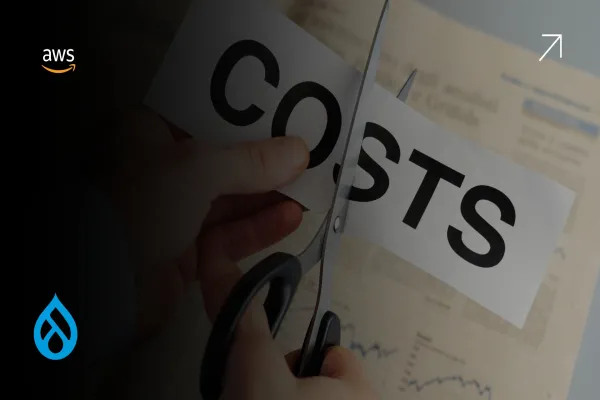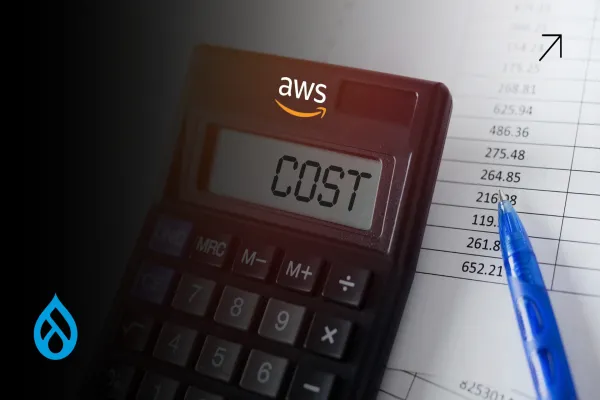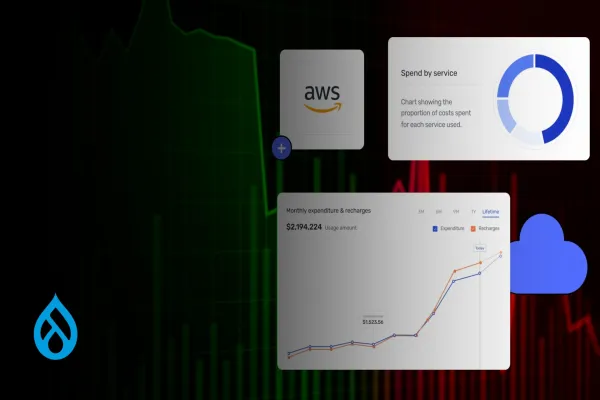If you're planning to run Drupal at scale, you'll eventually face the question: Should we self-host or run it on AWS?
At first glance, self-hosting seems cheaper. You control the hardware, manage your network, and don’t pay per-second compute rates. AWS, on the other hand, promises instant scale, flexibility, and managed services, at a cost that often feels hard to predict.
In 2025, the decision isn’t as simple as “cloud is expensive, self-hosting is cheap.” The truth is: both come with hidden costs. If you’re weighing the two, this article breaks down what actually saves more in the long run, based on the real behaviors of Drupal applications.
Upfront vs Ongoing Costs: A Misleading Comparison
Most teams compare the cost of an EC2 instance to a physical server and call it a day. But that’s not the right lens.
Self-hosting Drupal means investing in servers, storage, backup systems, and the manpower to keep it running. There’s the upfront cost of buying infrastructure, plus the continuous need for upgrades, patches, firewall configurations, disaster recovery setups, and hardware troubleshooting.
AWS spreads those costs over time. You pay for what you use. There's no hardware to maintain. But without active monitoring, those per-hour charges quietly add up. You’ll likely spend more each month, but get time back in exchange.
So what’s cheaper? It depends on how predictable your workload is. If your Drupal site has stable, flat traffic, self-hosting might work. If your traffic spikes or you release frequently, AWS may actually save you money by eliminating idle capacity and admin overhead.
Scaling and Spikes: The Real Cost of Being Unprepared
When traffic spikes, self-hosted servers either crash or sit underutilized for the rest of the year. That’s the real risk: planning for peaks means overpaying most of the time.
Drupal on AWS avoids that. You can auto-scale compute, isolate workloads, and offload heavy tasks to other services like CloudFront or S3. That flexibility is hard to replicate with physical infrastructure, unless you want to overbuild, overpay, and still be vulnerable to one bad rollout.
In the long run, AWS gives you cost elasticity. Self-hosting gives you cost predictability. But predictability isn't always the same as savings, especially when user experience and uptime are on the line.
People Costs Are the Real Cloud Tiebreaker
Here’s what often gets missed in the debate: who’s managing it?
Self-hosting requires in-house or on-call sysadmins. You need someone to patch OS vulnerabilities, monitor disk usage, manage SSL renewals, set up redundancy, and recover from failures. That’s the time your team isn’t spending on product, performance, or features.
With AWS, you still need ops knowledge, but you remove huge chunks of manual overhead. You don’t maintain physical drives. You don’t worry about power failures or RAID crashes. Your team focuses on code, not cables.
In long-term cost terms, this translates to fewer firefighting hours, faster go-to-market, and more bandwidth for product work. If your engineering team is small or spread thin, AWS often saves more than it seems, simply by reducing operational load.
Security and Compliance: Who Owns the Burden?
Security is another often-ignored cost. Self-hosted Drupal means you own the entire stack- from network to server to app. That includes encryption, vulnerability patching, intrusion detection, and audit trails.
On AWS, much of the infrastructure security is abstracted. You still manage app-level security, but AWS handles physical security, network segmentation, availability zones, and data durability. For industries with compliance demands (pharma, finance, healthcare), this shifts liability and reduces internal overhead.
The long-term cost here isn’t in tools. It’s at risk. A self-hosted breach or downtime event can cost more than years of AWS bills.
Who Should Choose Self-Hosting?
If your Drupal site is internal, not public-facing, and runs low-volume workloads with minimal changes, self-hosting might still make sense. Especially if you already have the infrastructure and a dedicated IT team to manage it.
But the moment uptime, user scale, content velocity, or compliance enters the picture, AWS starts looking less like a premium option and more like a necessity.
The Verdict: Saving Isn’t Just About the Bill
So, which actually saves more in the long run?
If you count server bills only, self-hosting might look cheaper. But if you add engineering hours, downtime risk, missed scale, security overhead, and user experience, the total cost leans heavily in favor of AWS.
What matters isn’t just what you pay. It’s what you trade off to keep paying less. And for fast-growing Drupal platforms, the trade-offs with self-hosting usually cost more than they save.





